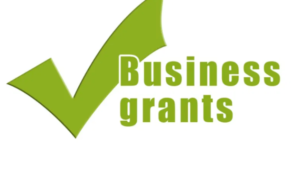When and How to Sell a Small Business

By James Pruitt, Senior Staff Writer
Business owners commonly build and then sell small businesses. Creating and selling businesses might be quite lucrative, depending on your expertise. Aside from being financially necessary, such a venture can be financially healthy in and of itself.
Successful business owners find various reasons to sell parts of their hard-won entrepreneurial ventures. At times, the business owner needs cash flow. At other times, the owner has encountered another entrepreneur with special expertise, who may further develop that portion of the business according to their own interests. The trick is to consider the right circumstances for you.
First, that business (or portion thereof) might have become a liability. Perhaps a home business requires a great deal of heavy moving, and the owner has suffered an injury. Maybe the business has developed in a new direction and the older parts of the company might better serve another organization. Maybe costs have increased, suppliers have left, or labor has become scarce in that region. In each case, a sale might be worthwhile.
Second, perhaps selling the business was the plan from the start. Perhaps a spark of inspiration led to the creation of that widget, but others have better resources to build that concept. In such a case, building the business short-term may be lucrative and productive. Selling the business might provide the end-fruits of the owner’s labor. The new business can carry on the concept with their own expertise and resources.
Third, the owner may simply be doing too much. Sometimes, a business expands too quickly. Skilled labor can be difficult to find even in an employer’s market. A sale may offer the company more value-added than an expensive hiring process. Often, a different organization has the resources to manage the workload for a part of your business.
Fourth, sometimes the market becomes risky for certain endeavors. For example, property management companies do best when real estate sales slump and more people rent. Real estate agencies do best when the market is hot. Sometimes, one business might raise capital selling resources to another when the two businesses are counter-cyclical. The economy frequently shifts so that one company’s resources might better serve another.
Fifth, the sale may pave the way for collaboration with another company. A partial sale is an excellent way to start an ongoing relationship. Suppose you own a computer repair company, and no longer need certain equipment. Another company may buy the equipment, then keep you on-call for service in the future. Additionally, the sale can establish ongoing synergies that may allow access to bargain deals or valuable expertise. Business relationships form over time, and sales of a part of a company may provide a future partner with intimate perspective. With growing familiarity, the partnership may become quite lucrative.
Whether to sell part of a company may depend on the changing circumstances of the owner, the economy, or the clients. Businesses are interdependent, and their needs often complement each other. Timing and long-term vision determines the best window for the best opportunities.
VAMBOA, the Veterans and Military Business Owners Association hopes that you have found this article on “When and How to Sell a Small Business” to be helpful and that it provides you valuable information.
VAMBOA invites you to become a member. There are not any dues or fees. VAMBOA is the “go to” online venue for Veteran and Military Business Owners. You can also use the VAMBOA seal for your collateral and website. Below is a link to join and register here:
https://vamboa.org/member-registration/














